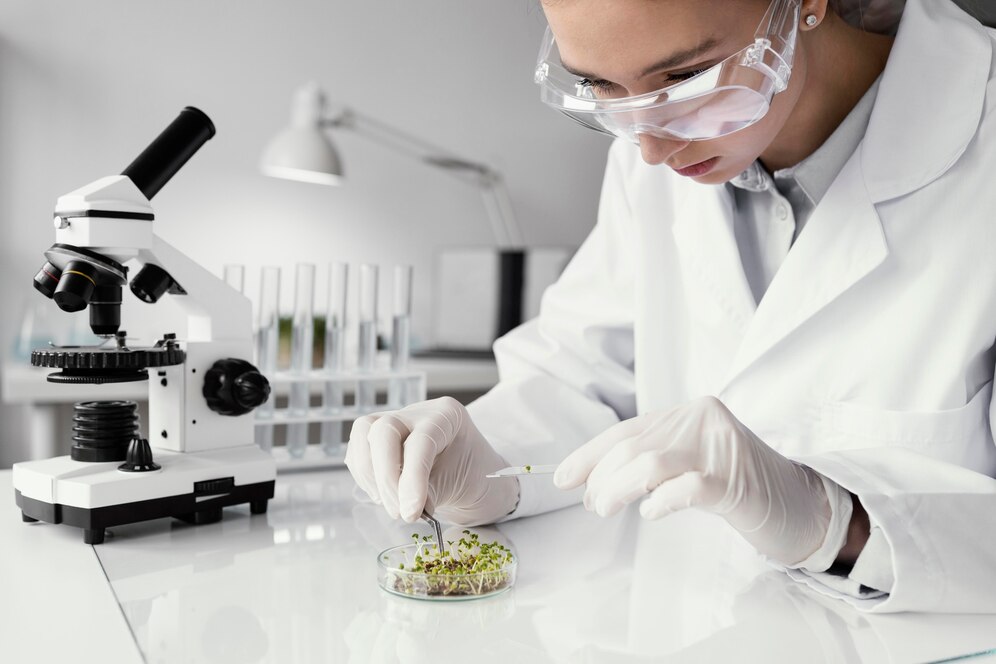Protein A Agarose and Protein G Agarose are two commonly used affinity chromatography tools in biochemical research. Both are designed to facilitate the purification and analysis of antibodies and proteins, but they have distinct properties and applications. Understanding the differences between Protein A Agarose and Protein G Agarose is crucial for selecting the appropriate tool for your specific experimental needs. This blog post will explore these differences, focusing on Protein G Agarose Beads and their unique advantages.
Overview of Protein A Agarose and Protein G Agarose
Both Protein A and Protein G are bacterial proteins that bind specifically to antibodies, making them valuable for antibody purification and related applications. Protein A Agarose and Protein G Agarose are affinity chromatography supports that combine these proteins with an agarose matrix. The key difference lies in their binding specificity and applications.
Protein A Agarose Beads: Protein A is derived from Staphylococcus aureus and binds primarily to the Fc region of immunoglobulin G (IgG) antibodies from many species. Protein A Agarose Beads are thus used to purify IgG antibodies efficiently. They are highly effective for antibodies from human, rabbit, and mouse sources, among others.
Protein G Agarose Beads: Protein G, also derived from Streptococcus, has a broader binding profile compared to Protein A. It also binds to the Fc region of IgG antibodies but with different affinities across species. Protein G Agarose Beads are often used when Protein A does not provide sufficient binding or when working with antibodies from species where Protein A has limited effectiveness.
Key Differences Between Protein A Agarose and Protein G Agarose Beads
Binding Specificity
Protein A Agarose Beads: Protein A has high affinity for the Fc region of IgG antibodies but is selective in its binding. Its effectiveness can vary depending on the antibody’s species and subclass. Protein A binds well with IgG from human, rabbit, and mouse sources but may have reduced efficiency with IgG from other species or certain subclasses.
Protein G Agarose Beads: Protein G offers a broader binding profile compared to Protein A. It binds to the Fc region of IgG from a wider range of species, including those where Protein A has lower affinity. This makes Protein G Agarose Beads versatile and useful for purifying antibodies from a diverse array of species and isotypes.
Affinity and Efficiency
Protein A Agarose Beads: The high affinity of Protein A for the Fc region generally results in efficient antibody capture and purification. However, the binding affinity may not be consistent across all antibody types and species. For example, Protein A might have lower affinity for certain subclasses of antibodies or less effectiveness with IgG from some non-human species.
Protein G Agarose Beads: Protein G typically provides a more uniform binding affinity across different antibody types and species. This means that Protein G Agarose Beads can be more reliable when working with a broad range of antibodies, including those with lower or variable affinities for Protein A.
Applications and Use Cases
Protein A Agarose Beads: These beads are particularly useful when the goal is to purify IgG antibodies from sources where Protein A has high binding efficiency. They are commonly used in applications requiring high-purity antibody isolation, such as preparing samples for immunoassays, structural studies, or therapeutic use.
Protein G Agarose Beads: Protein G Agarose Beads are favored in situations where Protein A might not perform optimally. They are suitable for purifying antibodies from species not effectively bound by Protein A or where the antibody subclass has lower binding affinity. They are also used for immunoprecipitation and protein interaction studies where a broader range of antibody types needs to be captured.
Elution Conditions
Protein A Agarose Beads: Elution of antibodies from Protein A Agarose Beads often requires specific conditions, such as low pH buffers (e.g., glycine) or high salt concentrations. The choice of elution conditions can affect the recovery and stability of the antibodies.
Protein G Agarose Beads: Protein G Agarose Beads may offer more flexibility in elution conditions compared to Protein A. Depending on the antibody and application, Protein G can be eluted using a variety of buffers, including those used for Protein A, but with different optimization based on the specific binding characteristics.
Cost and Availability
Protein A Agarose Beads: Generally, Protein A Agarose Beads can be more expensive due to the high affinity and specificity of Protein A. Their cost can be justified when the specific properties of Protein A are needed for high-purity antibody applications.
Protein G Agarose Beads: Protein G Agarose Beads are often priced competitively and can be a cost-effective alternative, especially in scenarios where the broad binding profile of Protein G provides better overall performance or when working with a wide range of antibody sources.
Choosing the Right Beads for Your Application
Selecting between Protein A Agarose Beads and Protein G Agarose Beads depends on several factors:
Antibody Source and Type: If you are working with antibodies from species or subclasses where Protein A has limited affinity, Protein G Agarose Beads may be a better choice. Conversely, if Protein A offers high efficiency for your antibodies, then Protein A Agarose Beads may be more suitable.
Purification Needs: For high-purity antibody isolation where Protein A is effective, it may be the preferred option. For broader applications and diverse antibody sources, Protein G Agarose Beads offer greater versatility.
Budget Considerations: Assess the cost versus performance for your specific needs. If the additional cost of Protein A is justified by the performance gains, it may be worth it. Otherwise, Protein G Agarose Beads provide a cost-effective solution with broad applicability.
Conclusion
Protein A Agarose Beads and Protein G Agarose Beads each have unique properties and advantages depending on the specific requirements of your research. While Protein A Agarose Beads offer high specificity for certain antibody types, Protein G Agarose Beads provide broader binding capabilities and versatility. By understanding the differences between these two types of affinity chromatography supports, researchers can make informed decisions and select the best tool for their antibody purification and protein analysis needs. Whether you are purifying antibodies, studying protein interactions, or performing immunoprecipitation, Protein G Agarose Beads offer a robust and versatile solution to enhance your research outcomes.




